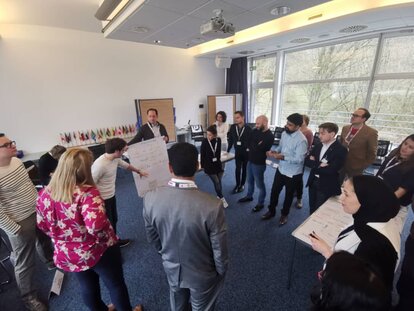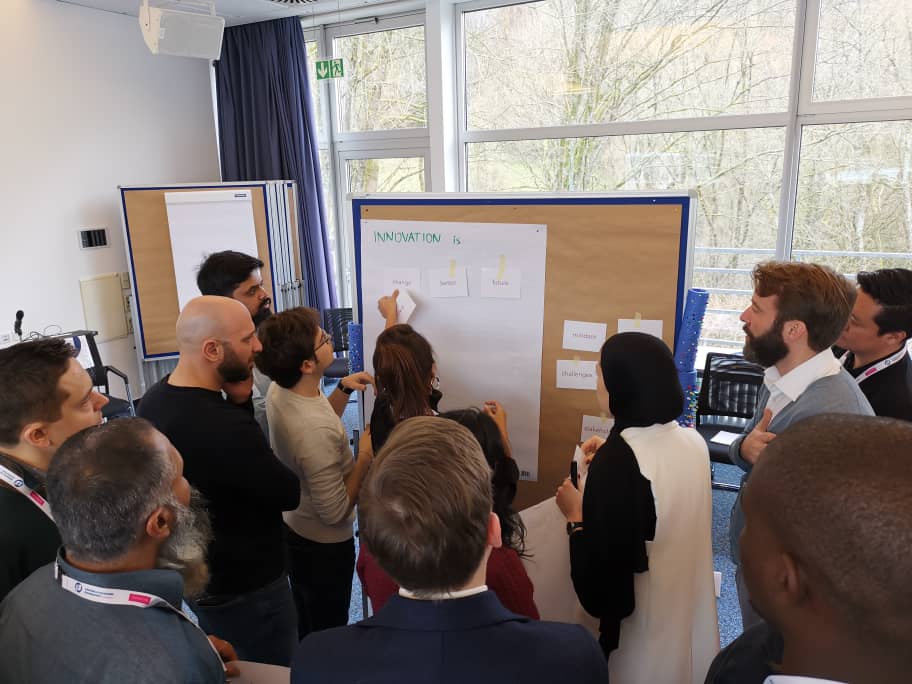IAF
Maximising The Customer Needs Through IAF Innovation Lab Seminar
Innovation is imperative for long-term survival and success. While many people associate innovation with special people who come up with creative ideas, it is more accurately nurtured by building an organisation that embraces innovation as part of its core DNA. The real question is what does that look like, and how do we make it happen?
On the first day, we discussed about the term “innovation” and we are made to believe in its importance. For many of us, innovation means providing ideas out of the blue leading to significant discoveries and achievements. However, there's more to it than that.
What I have learned from the training is that innovation isn’t solely represented by new devices, ideas or methods, but also by the process of uncovering new ways to do things. It can also pertain to modifying business models and adapting to changes to achieve better products and services.
I don’t have to have quality or power to create and the act of making, inventing or producing some technologies in order to be innovative. A little bit of hard thinking, leadership and maybe some creativity plus work results in innovation. Therefore, being innovative means you harness your creative ability.
Leadership plays a role too. They need to ensure they value innovation. To act with integrity, our thoughts and deeds need to be aligned. As a leader, this starts with evaluating what you prioritize. Do you value both delivering on current commitments and concurrently innovating to take advantage of new opportunities and approaches? Do you have a growth mindset? Do you value curiosity and appropriately paced change over stability?
As the board member of LEAD, I totally understand many leaders don’t take the time to look within and evaluate their values. When we are busy, we often run on autopilot. Now, it is time to schedule time to re-examine our views and see if the thoughts and beliefs that made us successful will support our future success.
Having worked in several NGOs and private sectors, I have learned that everyone can have innovative ideas. The value is only realized when the leaders and the organization align around supporting innovation as a key to success.
Aside from that, innovation can also pertain to new services, business models, working processes and functions. During the open space session which each one of us had the opportunity to create and manage the agenda ourselves, I can tell from observation that
“Innovation is not for geniuses working alone. It is a group activity and is definitely a teachable skill”.
One way to experience this is when distinctly different ideas come from different minds from different backgrounds. We shouldn’t be afraid to surround ourselves with people who have ideas that differ from ours. We'll come up with diverse ideas that we can pool to achieve a different approach from what has always been done -- and that is what I call motivation.
This actually reminds me to companies such as Starbucks which has implemented game-changing innovations in small ways that add to the big picture. Notice Starbucks doesn’t do small, medium and large cups. They have their own language such as grande and venti.

Here’s the best part of the training. Maximising the customer needs through business model canvas and design thinking process methods. This, for me, is the difference between a success of failure of the organisation.
Both methods represent the art of personalizing the customer needs and journey from moment to moment at scale. Our trainer, Rainer went so far as to say that ‘What’s on the people mind” “..know how to make them feel human”
He also right to say that we are much too focused on being ahead and not paying close enough attention to the human experiences we are creating for our clients and their customers.
With that in mind, don’t simply go chasing the next shiny seminar topics. What we should be doing is creating a basic framework for customer experience. Ideally, it would be equal parts predictive analytics and customer feedback about our program content, targeted content that has been personalised and building relationships at the same time. What are the most important things you can do to make customers feel valued? It can be a simple as asking them. In a connected world, customers are no longer willing to wait to get answers. They want to be able to reach out in an ever-increasing number of methods, including phone, email and social media channels.
For example, today people are spending their money on experiences over things, and one experience that many choose to save up for is travel. As competition heats up in the travel industry, airliners are increasingly focusing their strategies on building loyalty such as star alliance and one world alliance.

